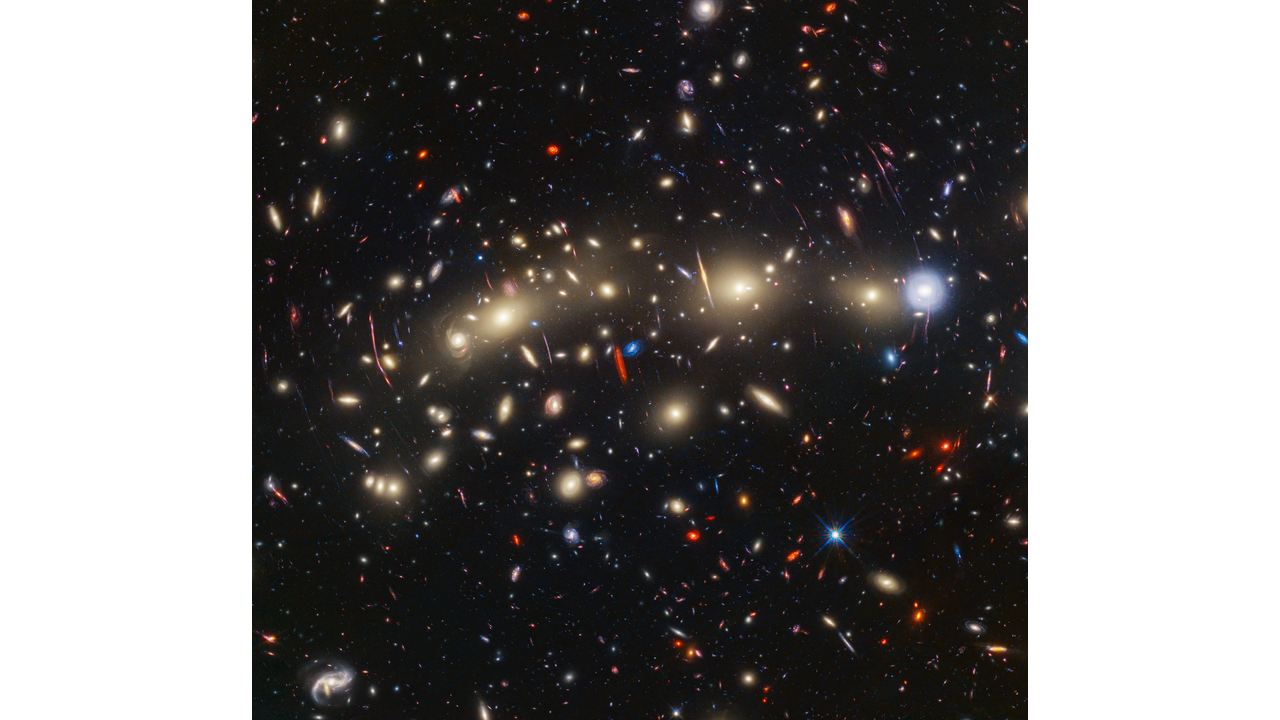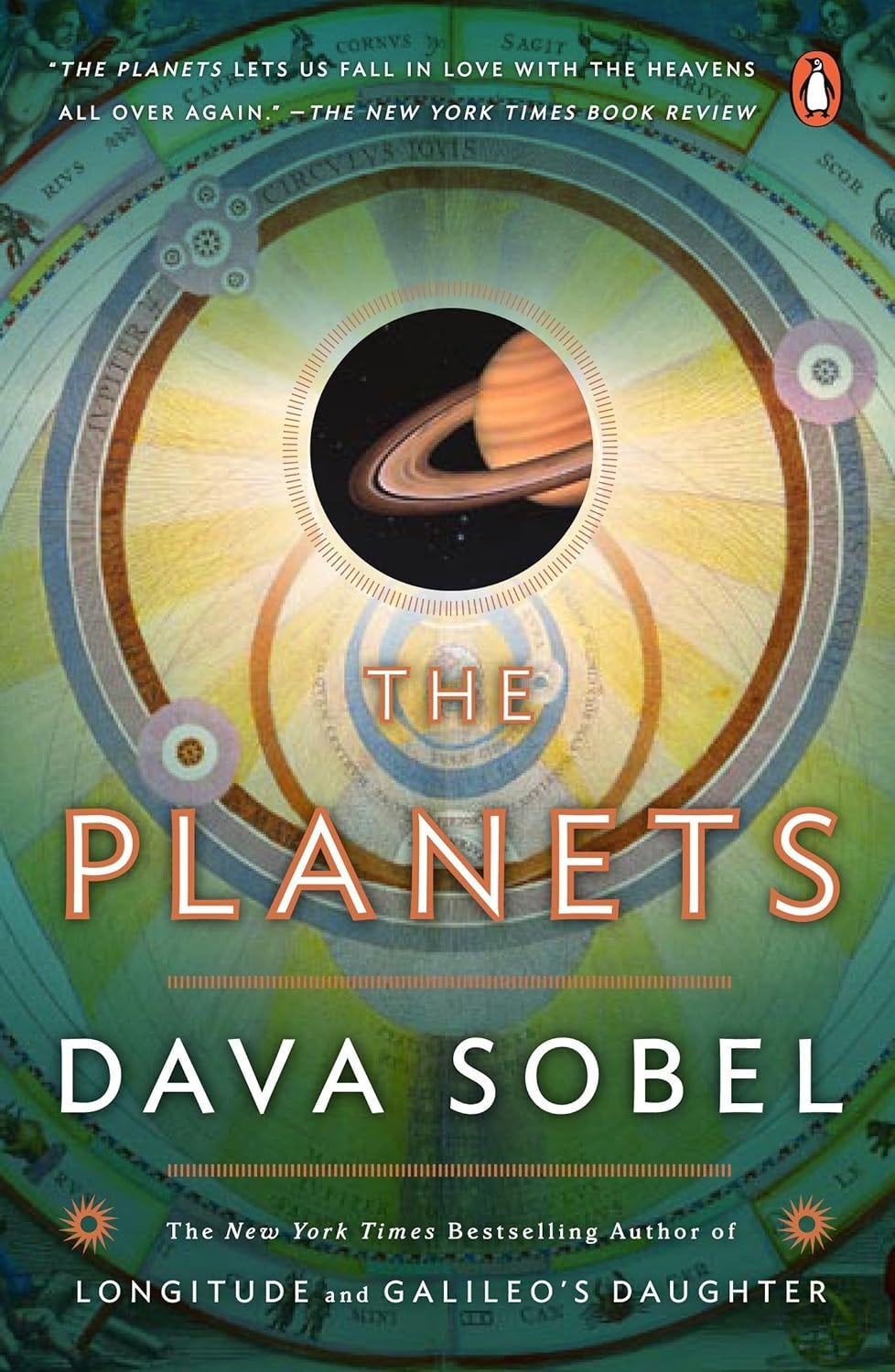Welcoming the Dark
Happy Winter Solstice! Where I live, at latitude 35.0016° N, there will be 9 hours and 48 minutes of daylight, 14 hours and 12 minutes of night. It’s the darkest day of the year.
While I don’t intend to waste a minute of the precious sunshine, the long, dark night holds delight of its own. Clear skies are forecast for my area, so I’ll bundle up and head outdoors after dinner. And I’ll look up. The winter sky is a marvel which rivals any Main Street holiday display.
Of course, what we can see is only a tiny speck in the vast wonder of the universe. Last month, NASA released an image produced by aiming both the James Webb Space Telescope and the Hubble Space Telescope at a cluster of galaxies located about 4.3 billion light-years from Earth. They’ve called it the Christmas Tree Galaxy Cluster
The colors relate to the wavelengths of light, and generally to how distant the galaxies are. The shortest wavelengths, colored blue, are relatively nearby galaxies. The redder galaxies are either more distant or contain lots of cosmic dust which tends to absorb blue starlight.
Full disclosure: I am not a science-y person. I stole that bit about the colored wavelengths straight from NASA’s press release. If I found myself seated next to Neil deGrasse Tyson at dinner, I would smile and nod silently in a futile effort to hide my ignorance. (How could that conversation possibly go? Hi, I’m Neil, the world’s most famous astrophysicist. Hello, I’m Sandi, a hand knitting designer. But Neil has charisma to spare, and I’m sure he’d be kind.) My lack of understanding does not hamper my sense of wonder.
To bring a bit of context to your stellar observations, you might want to read The Planets by Dava Sobel.
Sobel is a beautiful writer with a gift for making complex scientific information accessible and compelling for we non-science-y readers. In this book, she illuminates the origins and peculiarities of the planets through the lens of mythology, astrology, art, and history, as well as astronomy.
This is an older book, published in 2005. Some of the information is now out of date. The status of Pluto as a planet was still under debate (Pluto lost), and the launch of the Webb telescope was sixteen years in the future. But I’m happy to leave it to Neil (See that? One imaginary dinner and we’re on a first name basis.) to keep up with the latest developments. The Planets is worth reading for the way it links our own wonder at the miracle of the universe to that of all humankind. Ever since we’ve had the luxury of looking beyond satisfying our need for food and shelter, we have looked to the sky and marveled.
The period between the solstice and the beginning of the new year seems to me like secret, stolen (or stollen) time. Offices go quiet as co-workers try to use their accumulated vacation days. It’s assumed that everyone is busy with family and holiday obligations; the rest of the world is put on hold until January. No one expects much from me, and I’m free to retreat into my cozy nest and enjoy my solitary pleasures.
One of the pleasures in which I’ll be indulging is winding yarn. I love the process of winding yarn balls by hand. I mount the skeins on the 25-year-old wooden vertical swift shown below on the left, and wind each into a lovely center-pull ball.
For many knitters, this would seem crazy. Why waste time winding your yarn when you could get right to the knitting? Most people use a ball-winding device or, better yet, have skeins of yarn turned into balls at the yarn store. Not me. I think of winding yarn as knitting foreplay, and who’d want to skip that? This is my first opportunity to get to know the yarn. As every inch passes through my hands, I discover the texture and elasticity of the yarn. I find any knots or spinning irregularities I’ll need to deal with. Bottom line: I just like it.
If the yarn already comes wound in a pull-skein or ball, I don’t rewind it (that would be crazy). But I relish the preparatory step of turning a hank of yarn into a tidy ball with my hands.
The yarn I’m winding is Amano Yarns Warmi, a light worsted-weight blend of 70% baby alpaca and 30% Merino wool made in Peru. This yarn is deliciously soft and smooth, and I can tell the knitting will be a joy. I can’t tell you about the project yet, because this is a design commission for Amano and they reserve the privilege of revealing new designs. But I’ll let you know when it becomes available.
I hope you have a joyful Christmas, if you celebrate. Remember to take some quiet time for yourself. Go outside and look at the stars if you can. Light a candle and snuggle into your favorite chair. Celebrate the dark. Without it, we couldn’t see the stars.
Do you celebrate the winter solstice? I’d love to hear about it. Tell me what rituals, large and small, are important to you at this time of year.







